- info@shikharadventure.com Get Travel Expert Advise
- +977 9841869254 (Dambar) Viber & Whatsapp
Seven National Pride of Nepal
Seven National Pride of Nepal
Nepal is a country rich in culture and history, and its people are extremely proud of their heritage. Nepalis cherish a variety of things, from the towering Himalayan Mountains to the vibrant festivals and traditions. In this regard, there are seven Nepalese national prides worth mentioning. These seven elements reflect Nepal's diverse cultural and historical aspects and highlight its distinct identity. In this article, we will look at Nepal's seven national prides and why they are so important in Nepalese people's hearts.
1. Mt. Everest (Sagarmatha)
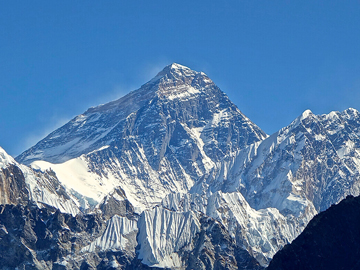 Mount Everest is the highest mountain in the world, rising 29,029 feet above sea level (8,848 meters). It is situated on the Nepal-Tibet border in the Mahalangur mountain range. Sir George Everest, a British surveyor-general of India, inspired the mountain's name.
Mount Everest is the highest mountain in the world, rising 29,029 feet above sea level (8,848 meters). It is situated on the Nepal-Tibet border in the Mahalangur mountain range. Sir George Everest, a British surveyor-general of India, inspired the mountain's name.
Since the first successful summit in 1953 by Sir Edmund Hillary of New Zealand and Tenzing Norgay, a Sherpa from Nepal, Mount Everest has been a popular destination for mountaineers. Every year, thousands of people attempt to climb the mountain, with varying degrees of success.
Mount Everest, despite its popularity, is a dangerous and difficult feat that has claimed the lives of many climbers over the years. Even the most experienced climbers face a formidable challenge due to the mountain's extreme altitude and unpredictable weather.
Mount Everest is an iconic Nepali symbol and a source of pride for Nepalis. It draws visitors from all over the world and contributes significantly to the country's tourism industry.
2. National Flag
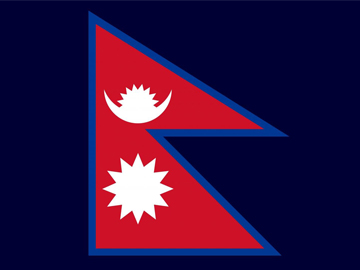 The national flag of Nepal is a distinct and meaningful symbol that represents the country's unique identity and heritage. The crimson red and dark blue colors of the flag represent bravery and peace, respectively, while the two triangular shapes represent the Himalayan Mountains and Hinduism and Buddhism's unity. The flag, which was adopted in 1962, reflects Nepal's status as a sovereign nation that has never been colonized. It is a source of pride for Nepalis and serves as a reminder of their rich cultural heritage as well as the struggles they endured in order to achieve independence and self-determination. Nepal's national flag is a revered symbol held dear by Nepalis both within the country and around the world.
The national flag of Nepal is a distinct and meaningful symbol that represents the country's unique identity and heritage. The crimson red and dark blue colors of the flag represent bravery and peace, respectively, while the two triangular shapes represent the Himalayan Mountains and Hinduism and Buddhism's unity. The flag, which was adopted in 1962, reflects Nepal's status as a sovereign nation that has never been colonized. It is a source of pride for Nepalis and serves as a reminder of their rich cultural heritage as well as the struggles they endured in order to achieve independence and self-determination. Nepal's national flag is a revered symbol held dear by Nepalis both within the country and around the world.
3. National song
.jpg) "Sayaun Thunga Phool Ka," which translates to "Hundreds of Flowers," is Nepal's national anthem. Pradeep Kumar Rai wrote the anthem, and Amber Gurung composed the music. It became the official national anthem in 2007, replacing the previous anthem, which had been in use since the 1960s.
"Sayaun Thunga Phool Ka," which translates to "Hundreds of Flowers," is Nepal's national anthem. Pradeep Kumar Rai wrote the anthem, and Amber Gurung composed the music. It became the official national anthem in 2007, replacing the previous anthem, which had been in use since the 1960s.
The anthem's lyrics praise the country's natural beauty, cultural diversity, and people's bravery. The anthem is a significant symbol of Nepali identity, and it is performed at a variety of occasions and events, including official ceremonies, national holidays, and sporting events. Nepalis take great pride in their national anthem, which is regarded as a unifying force that brings people from various regions and ethnicities of the country together.
4. The Gurkha Soldiers
 Gurkhas are Nepalese soldiers who have served in the British Army for over 200 years. They are well-known for their bravery, loyalty, and military prowess, and have received numerous medals in recognition of their service. The Gurkhas hold a special place in the hearts of the British people, and their bravery and resilience are admired around the world. The recruitment of Gurkha soldiers into the British Army has a long history, and their service is highly valued. The Gurkhas continue to serve in the British Army in various capacities today, and their contributions to the country's military history are widely acknowledged.
Gurkhas are Nepalese soldiers who have served in the British Army for over 200 years. They are well-known for their bravery, loyalty, and military prowess, and have received numerous medals in recognition of their service. The Gurkhas hold a special place in the hearts of the British people, and their bravery and resilience are admired around the world. The recruitment of Gurkha soldiers into the British Army has a long history, and their service is highly valued. The Gurkhas continue to serve in the British Army in various capacities today, and their contributions to the country's military history are widely acknowledged.
5. Lumbini (Birth place of Buddha)
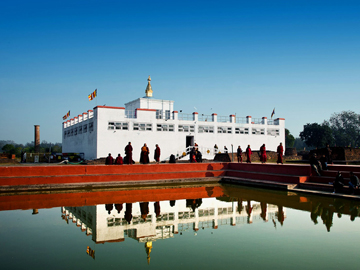 Lumbini is a small town in Nepal known for being the birthplace of Gautama Buddha, the founder of Buddhism. It is situated in Nepal's southwestern Terai plains, close to the Indian border.
Lumbini is a small town in Nepal known for being the birthplace of Gautama Buddha, the founder of Buddhism. It is situated in Nepal's southwestern Terai plains, close to the Indian border.
Lumbini is a UNESCO World Heritage Site and a popular pilgrimage destination for Buddhists from around the world. The Maya Devi Temple, built on the exact spot where Buddha was born, is the town's main attraction. A sacred pond, the Ashoka Pillar, and several other temples and monasteries are part of the temple complex.
Aside from its religious significance, Lumbini is a popular tourist destination for those interested in exploring the region's ancient ruins and artifacts. Several archaeological sites and museums in the town showcase Nepal's rich cultural heritage.
Lumbini is a historical and cultural landmark that symbolizes Nepal's rich heritage and the contributions of Buddhism to the world. It is a must-see for anyone interested in history, religion, or culture.
6. The One-Horned Rhinoceros
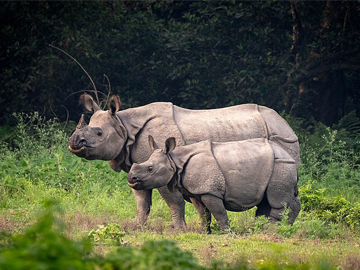 The one-horned rhinoceros is a rhinoceros species found in India and Nepal, including Nepal's Chitwan National Park. It is a herbivore that can weigh up to 2,700 kilograms. The one-horned rhinoceros represents Nepal's conservation commitment, and efforts have been made to protect its habitat and prevent poaching. The Chitwan National Park, a UNESCO World Heritage Site, is home to a number of endangered species, including the one-horned rhinoceros. Visitors can observe these magnificent creatures in their natural habitat at the park, which is a popular destination for tourists interested in wildlife conservation. The one-horned rhinoceros is an important part of Nepal's natural heritage, and its protection and preservation are critical for the country's rich biodiversity to be preserved.
The one-horned rhinoceros is a rhinoceros species found in India and Nepal, including Nepal's Chitwan National Park. It is a herbivore that can weigh up to 2,700 kilograms. The one-horned rhinoceros represents Nepal's conservation commitment, and efforts have been made to protect its habitat and prevent poaching. The Chitwan National Park, a UNESCO World Heritage Site, is home to a number of endangered species, including the one-horned rhinoceros. Visitors can observe these magnificent creatures in their natural habitat at the park, which is a popular destination for tourists interested in wildlife conservation. The one-horned rhinoceros is an important part of Nepal's natural heritage, and its protection and preservation are critical for the country's rich biodiversity to be preserved.
7. The Pashmina Shawl
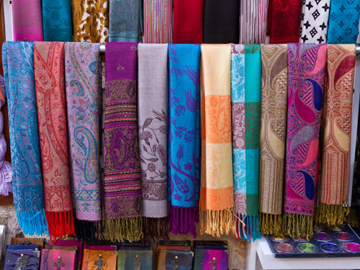 The Pashmina shawl is a luxurious garment made from the Himalayan mountain goat's wool. It is well-known for its softness, warmth, and durability, and it is in high demand all over the world. For centuries, Nepal has produced the Pashmina shawl, which is a symbol of the country's rich cultural heritage. It is woven by hand by skilled artisans using traditional techniques and can take several weeks to complete. The shawl comes in a variety of colors and designs, and each piece is one-of-a-kind. The Pashmina shawl is a popular souvenir for visitors to Nepal, and it is frequently given as a gift on special occasions. It is also a valuable export for the country and has made significant contributions to the Nepalese economy. Pashmina shawl production is a source of pride for Nepalis, and efforts are being made to preserve this traditional craft while also supporting the livelihoods of the artisans who make them.
The Pashmina shawl is a luxurious garment made from the Himalayan mountain goat's wool. It is well-known for its softness, warmth, and durability, and it is in high demand all over the world. For centuries, Nepal has produced the Pashmina shawl, which is a symbol of the country's rich cultural heritage. It is woven by hand by skilled artisans using traditional techniques and can take several weeks to complete. The shawl comes in a variety of colors and designs, and each piece is one-of-a-kind. The Pashmina shawl is a popular souvenir for visitors to Nepal, and it is frequently given as a gift on special occasions. It is also a valuable export for the country and has made significant contributions to the Nepalese economy. Pashmina shawl production is a source of pride for Nepalis, and efforts are being made to preserve this traditional craft while also supporting the livelihoods of the artisans who make them.
Ultimately, Nepal's seven national prides reflect the country's distinct identity and heritage. They highlight Nepal's natural beauty, cultural diversity, and people's bravery and resilience. These prides serve as a source of inspiration and pride for Nepalis, as well as a reminder to the rest of the world of the country's rich heritage.
Recent Post
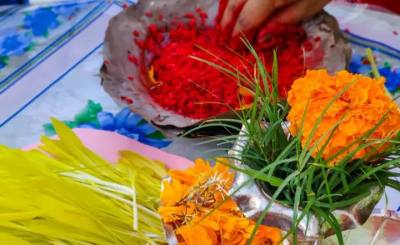
Dashain Festival - The Most Celebrated Nepalese Holiday
Others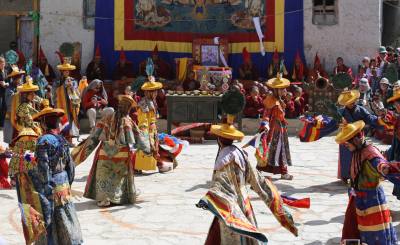
Exploring the Enchanting Mustang Valley: A Must-Visit Destination in 2023
Trekking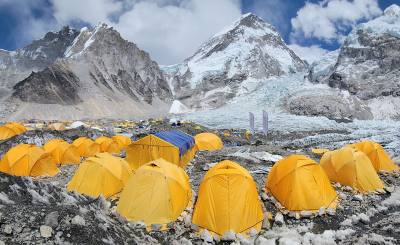
International Mt. Everest Day | 70 years of Amazing Accomplishments
Others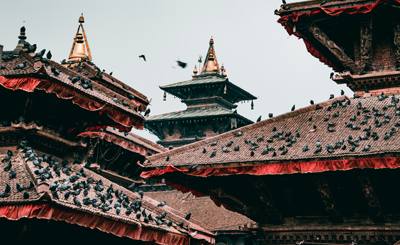
Nepal: A Melting Pot of Culture, Tradition, and Hospitality
Others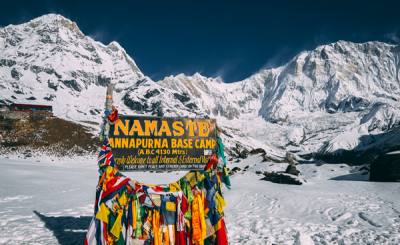
Annapurna Trek Guide: A Majestic Himalayan Adventure to Remember
Trekking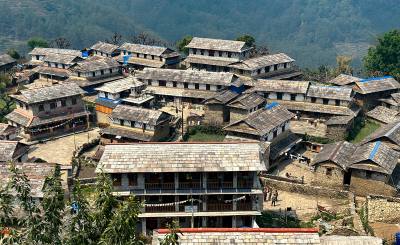
Ghandruk - A Cultural and Natural Heaven in the Annapurna Range
Trekking


